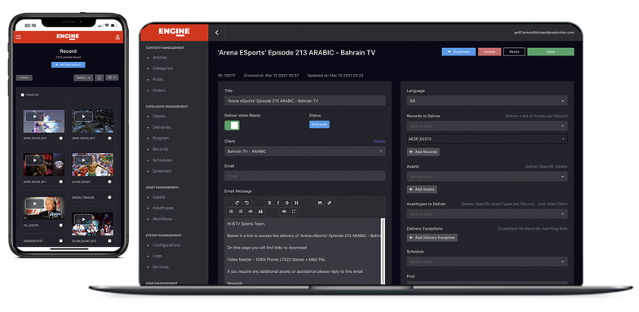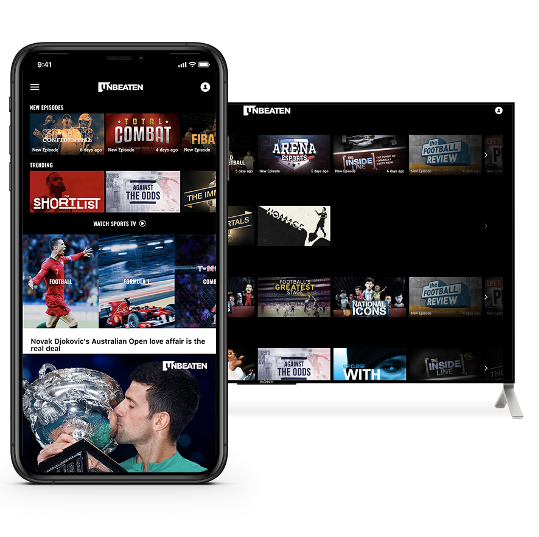AWS for M&E Blog
Inverleigh Media: content delivery on AWS
This post is co-authored by Guill le Roux, General Manager – Digital at Inverleigh, Rob Spaits, Product Manager at Inverleigh, and Anshumali Sharma, Solutions Architect, AWS. The content and opinions in this post are those of the third-party author and AWS is not responsible for the content or accuracy of this post.
Media consumption using broadcast and digital streaming technologies accelerated in 2020 due to significant changes in how and where people consume content, driven in part by COVID-19. Inverleigh, a television content producer and distributor based in Melbourne, Australia with over 500 international broadcast and digital clients, was prepared for this shift. Inverleigh started on a digital transformation journey in 2018, to become as agile as the fast-changing video content market demands.
Inverleigh required a content management solution to maximize potential not only in digital over-the-top television, but also in social and direct-to-consumer streaming. After surveying the available solutions in the market, Inverleigh found no existing product was able to meet their needs. This resulted in Inverleigh building its own bespoke platform called “Engine”, to centralize the storage, management, and delivery of their content.
Inverleigh’s ambition entering into the project was significant. “We needed to not only handle our immediate needs, but have the flexibility and scalability to cater for any future content management and delivery requirement we or our partners may have. On top of this, we had to deliver this functionality at a net cost saving by consolidating IT vendors and automating laborious internal workflows.” said Guill le Roux, GM digital.
The solution
The three functional pillars of Engine platform are:
-
Data and file storage and archival
Engine provides a cloud-based Content Management System (CMS) so everyone in the business has access to Engine platform and can add, download, or send content as needed. By consolidating both their file archive and data in the cloud, it democratized access and reduced overhead.
Before moving to Engine, Inverleigh stored their content in various mediums. Their video masters were stored on data tape, low-resolution video files in an on-premises server, scripts in an online drive, and episodic metadata in a database. This fragmentation meant significant administration overhead.

-
Automated transformation and delivery
Engine provides automated workflows for transforming and distribution of the media content. With their data and files organized, Inverleigh could build layers of automation to reduce the workload around routine and often complex day to day tasks.
Engine can now dynamically transform a source file or episode in the format requested by Inverleigh’s digital media streaming clients. Engine can then trigger the delivery to that client when that transformation is complete via a push to a file transfer server, Amazon Simple Storage Service (Amazon S3) bucket, or through the creation of edge-optimized download links using Amazon CloudFront.
Previously, this simple workflow required operators to complete several manual steps. Engine now completely automates this process, resulting in operational efficiency for Inverleigh and their clients.
-
Digital content management and publishing
Inverleigh’s direct-to-consumer channel and streaming platform – Unbeaten (unbeaten.com) – is also powered by Engine. The Amazon API Gateway-based API delivers articles, social media-style posts, videos, and full episodes to consumers on any front end like a web browser or an app.
The API also provides episodic screener information to Inverleigh’s sales teams and acts as a demonstration tool for Inverleigh’s customers. In addition, highly optimized metadata drawn from Unbeaten is delivered to digital streaming clients. Content at Inverleigh is centralized and can be made available to any interface where it can add value in the workflow.

The architecture
Given the requirement and need for scalability and reliability, Inverleigh chose to build their solution on AWS. It took them over 6 months to put together the right team, and to get familiar building with their chosen AWS architecture, but progress was fast once they had traction.
A serverless asynchronous architecture was the chosen solution to process thousands of assets comprising hundreds of gigabytes. The business logic is built using AWS Step Functions and AWS Lambda Functions, which are triggered by an Amazon Elastic Compute Cloud (Amazon EC2) hosted API platform, which also acts as a single source of truth. File storage is handled in Amazon S3 object storage with Amazon S3 Glacier Deep Archive used for archival.

Each component of the system utilizes AWS services, which enables Inverleigh to put their resources into work that delivers on business requirements; not management and operations of tools.
Engine’s business logic focuses on inferring correct client delivery or file format requirements from contracts and other user’s inputs. Once requirements are defined, methods of delivering on these requirements are evaluated and then payloads are assembled for the various services to complete the chosen workflow.
AWS Elemental MediaConvert does the transformation of files for video transcoding. AWS Fargate is also used for complex, non-routine transformations such as video on video overlays, watermarks on specific frames, clipping, and color tweaking. Lambda support for containers enables the team to reuse their code for tasks like image resizing and video manipulation in both containers and serverless environments. All transformations can be run concurrently for unmatched speed and efficiency.
From concept to value driver
Within a year of development, total content delivery output increased and a reduction in media operation overhead of over 30% was realized. This was a product of both a redeployment of human resources and a reduction in IT expenditure.
Inverleigh also launched an internal content sales presentation tool and a direct-to-consumer digital streaming platform. These two platforms run off their custom API – a testament to the development speed possible with the architecture.“Getting started with cloud functionality, redesigning our internal processes and refining development operation processes that were still nascent, meant a significant learning curve for the product, media, and the development team. Traditional paradigms we were used to had to be put aside. The payoff of making this shift was increased speed and efficiency of development once we hit our stride. Faster development means happier internal stakeholders and better serviced partners” -Rob Spaits, Product Manager.
An example of value delivered by Inverleigh was when the untimely death of football legend Diego Maradona presented a challenge for Inverleigh in November 2020. They needed to deliver results quickly with a huge global interest in the event for Inverleigh’s audience and high client demand for Maradona content.
Before implementing Engine, this would have been impossible for Inverleigh to meet the demands of their digital customer. With Engine platform in place, Inverleigh were able to quickly search their archive and pull all content relating to the football great.
After editing completed, transformation and delivery of media assets and associated metadata to clients and consumers was seamlessly completed in the cloud. All of this happened within hours of news Diego Maradona’s death breaking out.
Conclusion
Inverleigh is now able to take full advantage of the cloud and the suite of serverless functionality it provides. They went all-in on the cloud and successfully built key business operations around a modern, serverless architecture.
Get in touch with the team at Inverleigh to discuss how they can leverage their Engine platform to support your video content management goals in OTT, Social, and Direct to Consumer streaming use cases.
 |
Guill le Roux is the General Manager of Digital at Inverleigh. He loves leveraging cloud technology to create rich user experiences, streamline internal operations and better organise business information for improved commercial outcomes. |
 |
Rob is the Product Manager at Inverleigh. He has a background in digital, telecommunications, broadcast as well as R&D. Rob enjoys creating and delivering innovative, customer focused solutions. |